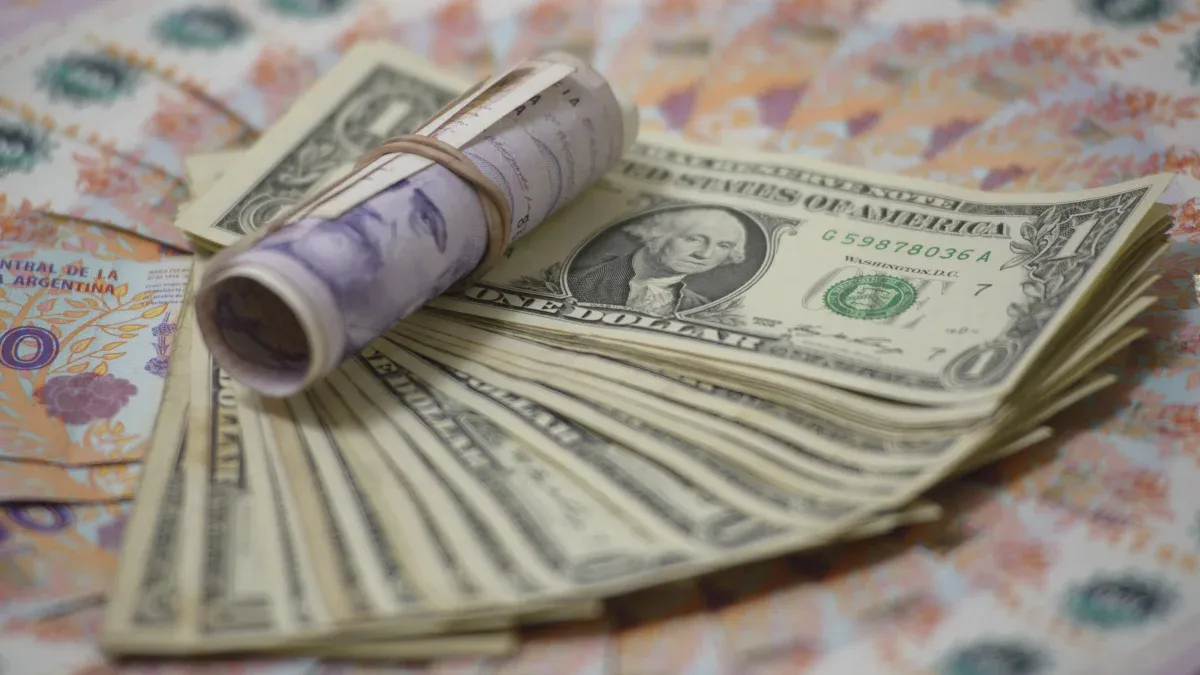After a year of harsh fiscal adjustment, Argentina’s multilateral real exchange rate (TCRM) returned to the level left by the previous economic management. The deterioration is due to the appreciation of the peso against the dollar, combined with a 25% devaluation so far this year in Brazil.
The main economy of Mercosur, which is also the first destination for products from SME industries, It weights 30% in the indicator prepared by the Central Bank (BCRA) on a daily basis. It is prepared based on the price of the goods that the country exchanges with its 12 main trading partners.
And, although it is not equivalent to the price of the dollar, which runs in another way, It is a good indicator of how cheap or expensive the country is to sell abroad or receive tourists.
The last form of the BCRA indicates that ITCRM fell to 79.1 points this December 18while in the day Prior to the assumption of Javier Milei it was at 80.1 points. The large drop in recent weeks is due to the deterioration of the real exchange rate with Brazil.
The business relationship and Lula’s advertisements
Argentina’s position in the trade relationship with Brazil has been worsening since the government of Luis Fernando “Lula” da Silva He presented to the market a fiscal adjustment plan aimed at attacking the country’s significant fiscal deficit that did not convince.
The Stock company Portfolio Personal Investments (PPI) points out that, “in the world, the US dollar appreciated.” “He DXY index, which measures the evolution of the dollar against a basket of developed currencies, increased 1%,” indicates the report. The analysis indicates that, “Contrary to the Argentine peso, emerging currencies were the ones that suffered the most.”
“As an example, the Brazilian real, which had already been weakening due to local factors, rose 3%. This translated into a drop in the real bilateral exchange rate with Brazil of 1.6% to the lowest levels since October 2015,” says PPI.
The delay of the ITCRM explains the problems of the Argentine economy in being able to compete. “When it is cheaper to buy Egyptian oranges or have a coffee in Miami, something is wrong,” he said in a recent interview with the former head of Customs, Guillermo Michel.
One effect of the delay is that the price of Some foods in Argentina were more expensive than in Brazil. In some cases it even seems absurd, because here there is national production of certain products, which the neighboring country does not have or if it does, it does so under unfavorable conditions.
A survey of Coninagro points out that yerba mate is 70% more expensive than in Brazil; rice, 59%; pork per kilo, 34%; olive oil, 33%; milk, 25%; bread and kilo of rump, 8%.
On the other hand, the strong devaluation in December was functional to the objective of stabilizing public accounts and dissolve the excessive amount of pesos that were in the market.
This is what was called beginning of the “blender effect” management”, which the economic authorities flatly denied, ensuring that it was a real spending cut.
It is true that there was a large proportion of spending that was resolved by a real cut, but the delay in the exchange rate also had to do with it.
Source: Ambito
David William is a talented author who has made a name for himself in the world of writing. He is a professional author who writes on a wide range of topics, from general interest to opinion news. David is currently working as a writer at 24 hours worlds where he brings his unique perspective and in-depth research to his articles, making them both informative and engaging.




